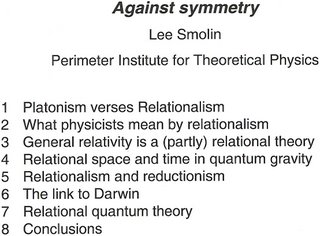There are several recognized processes from the early universe that leave relic effects setting the stage for galaxy formation and evolution. We deal here with the first generarion of stars, primordial nucleosynthesis, the epoch of recombination, and the thermal history of various cosmic backgrounds.
Part of understanding the time line is first knowing where the Pregalactic Universe exists in that time line.
Plato:
So given the standard information one would have to postulate something different then what is currently classified?
A new Type III (what ever one shall attribute this to definition), versus Type I, Type IIa?
The idea is to place the distant measure in relation to what is assumed of TYPE I, TypeIIa. It assumes all these things, but has to been defined further, to be a Type III. That's the point of setting the values of where this measure can be taken from.
I wrote someplace else the thought generated above. It is nice that the world of scientists are not so arrogant in some places, while some have been willing to allow the speculation to continue. Even amidst their understanding, that I was less then the scientist that they are, yet recognizing, I am deeply motivated to understanding this strange world of cosmology and it's physics.
When I wrote this title above I was actually thinking of two scenarios that are challenging the way I am seeing it.
Credit: NASA/WMAP Science Team
WMAP has produced a new, more detailed picture of the infant universe. Colors indicate "warmer" (red) and "cooler" (blue) spots. The white bars show the "polarization" direction of the oldest light. This new information helps to pinpoint when the first stars formed and provides new clues about events that transpired in the first trillionth of a second of the universe.
First of these, was in terms of the time line and what we know of the WMAP demonstration given to us of that early universe. I of course inject some of what I know by past research to help the general public understand what is being demonstrated from another perspective.
This is what happens as you move through different scientists(Wayne Hu) thoughts to see the world in the way they may see it. This concept can be quite revealing sometimes giving a profound effect to moving the mind to consider the universe in new ways.
"Lagrangian views" in relation may have been one result that comes quickly to my mind. Taking that chaldni plate and applying it to the universe today.

Even though in the context of this post, we may see the universe in a "simple experiment" not just demonstrating the "early universe," but the universe in it's "gravitational effect" from that evolution to matter defined now.
The Time Line
Credit: NASA/WMAP Science Team
The expansion of the universe over most of its history has been relatively gradual. The notion that a rapid period "inflation" preceded the Big Bang expansion was first put forth 25 years ago. The new WMAP observations favor specific inflation scenarios over other long held ideas.
Looking to the "far left" of the image we see the place where the cosmic background is being demonstrated, while to the "far right" we see the satellite which has helped measure what we know of the early universe. So this "distant measure" has allowed us to understand what is behind the scene of what we know of cosmology today of events, galaxies and such.
Second, what comes to mind is the Massive Blue Star of 100 Solar masses that would have been further out in terms of the billions of years that we may of sought in terms of our measures. So this would be of value I would assume in relation to model perspective and measures?
So the distance measure has been defined then by understanding the location of the cosmic background and the place where the Blue giants will have unfolded in their demise, to the creation of blackholes.
The processes in the Universe after the Big Bang. The radio waves are much older than the light of galaxies. From the distortion of the images (curved lines) - caused by the gravitation of material between us and the light sources - it is possible to calculate and map the entire foreground mass.Image: Max Planck Institute of Astrophysics
We don't have to wait for the giant telescope to get unparalleled results from this technique, however. One of the most pressing issues in current physics is to gain a better understanding of the mysterious Dark Energy which currently drives the accelerated expansion of the Universe. Metcalf and White show that mass maps of a large fraction of the sky made with an instrument like SKA could measure the properties of Dark Energy more precisely than any previously suggested method, more than 10 times as accurately as mass maps of similar size based on gravitational distortions of the optical images of galaxies.






